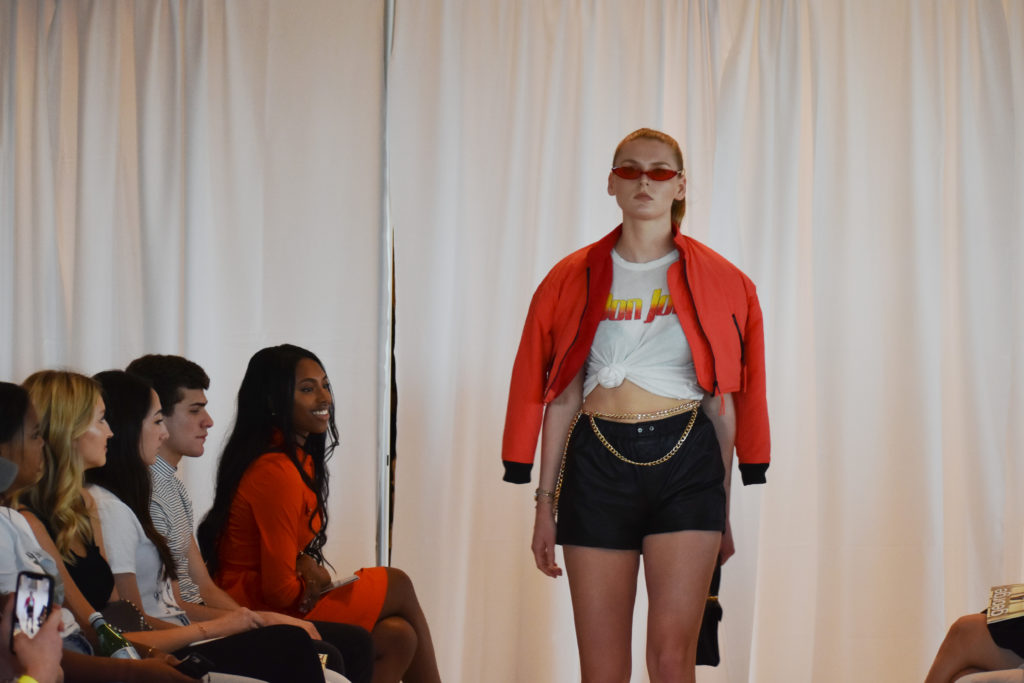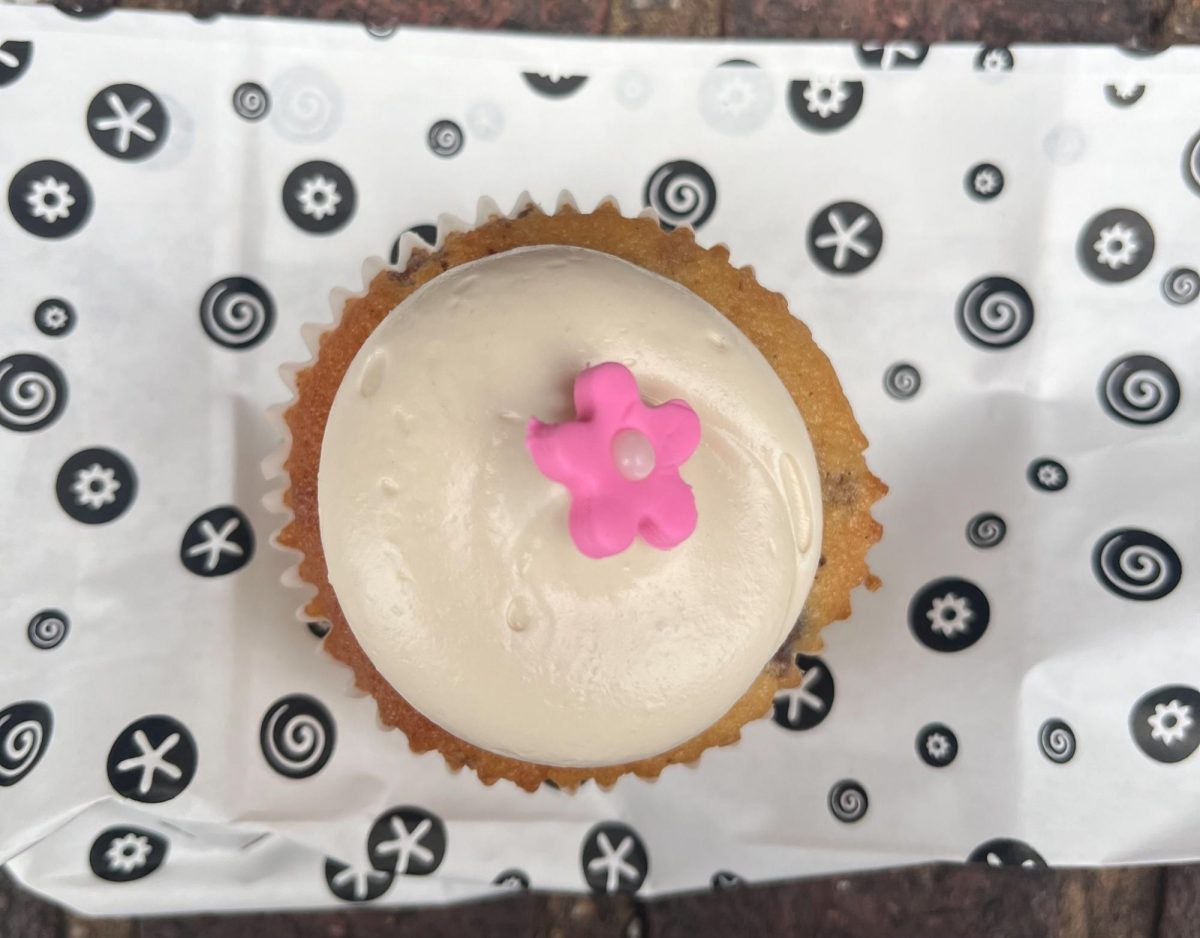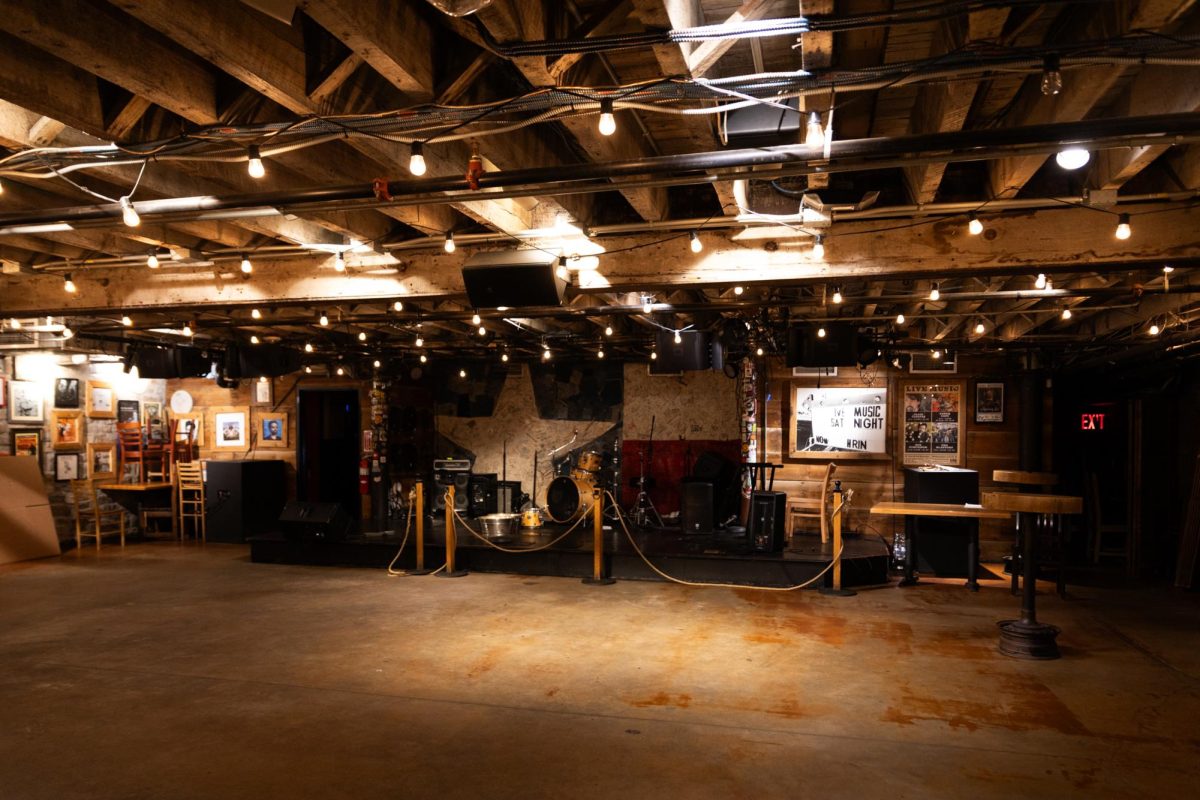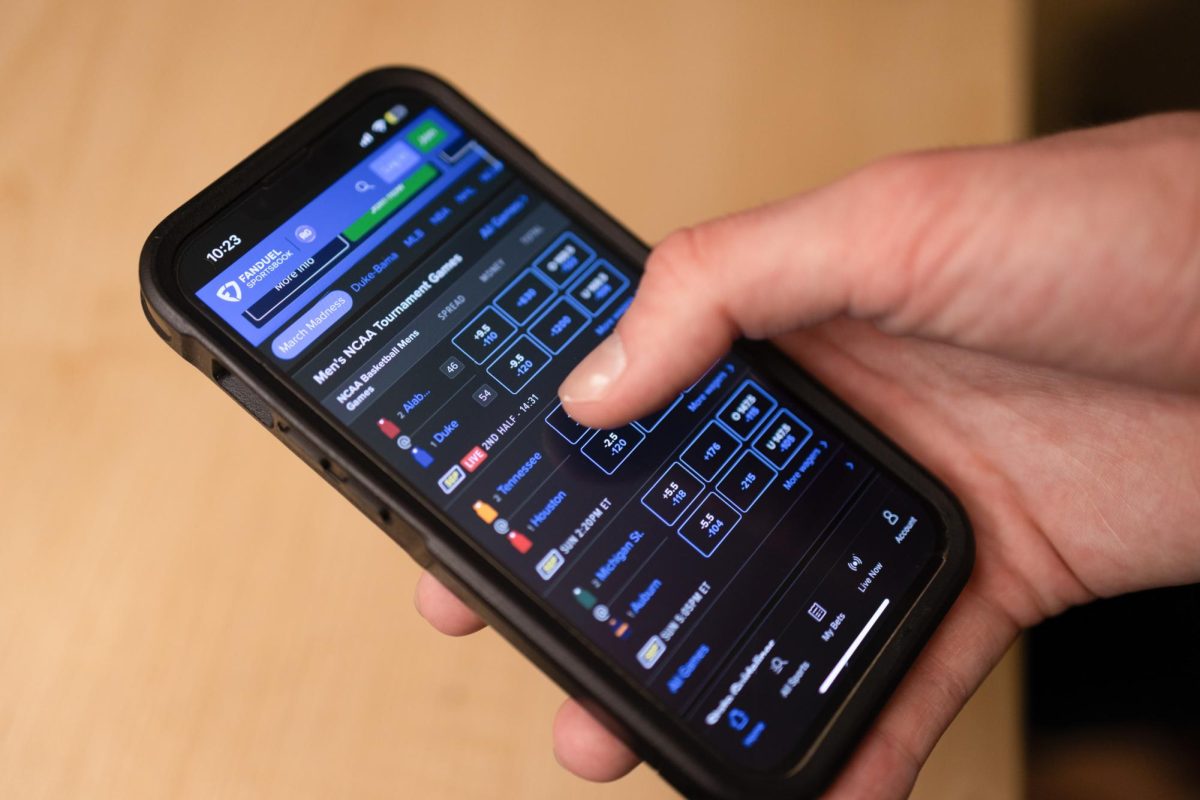Student stylists and fashionistas gathered in the Elliott School City View Room Saturday for the Fashion and Business Association’s inaugural fashion show.
Seven members of the FBA curated about 60 looks made entirely from materials out of their closets, like pleather hats and bright red skirts. At the event, FBA student leaders also debuted their first biannual fashion magazine, dubbed “George,” which features student stylists’ work.
“The purpose of the fashion show is to exhibit to the GW community what students have to offer in terms of talent and skill and to curate their pieces creatively rather than just showing the clothes themselves,” junior and FBA co-founder Suraya Salfiti said.
The publication, which was produced online and in print, includes articles on topics like the impact of social media on fashion and profiles of designers Iris Van Herpen and Kim Jones. The magazine also includes photos of students’ fashion pieces.
During the fashion show, freshmen Connor Gable, Gustavo Martinez, Alex Frieder and Andrea Kang, who customizes and designs denim products through her company Jeanne Bleu, showcased their work. Sophomores Nicole Pollack and Kelsey McEvoy and junior Carolina Garcia also styled outfits for the show.
Attendees gathered around a white runway with curtains that separated the backstage area from the audience.
About 28 models walked the runway, sporting pieces like neon yellow shirts, belts, silver puffer jackets, cowboy boots and chain belts paired with blazers. The show also featured a mix of streetwear and high fashion looks, from t-shirts to designs from Prada.
[gwh_image id=”1086855″ credit=”Alexander Welling | Photographer” align=”none” size=”embedded-img”]Freshman Fautoumata Sow shows off her outfit at the Fashion and Business Association’s inaugural fashion show. [/gwh_image]
Salfiti, the co-founder of the FBA, said the organization hosted the fashion show to showcase its members’ work to peers. She said members of the organization plan to host fashion shows every semester so student stylists can continue advertising their pieces and build a network of students interested in the fashion industry.
The FBA became a student organization last fall and has grown to about 30 members over the past academic year. Garcia and Salfiti launched the organization to give students opportunities to grow connections in the fashion industry because the University does not currently offer a fashion studies degree.
Since the organization launched, it has hosted events like a Denim Drive in December, which allowed students to bring their old denim to members of the FBA to be refurbished with paint and rips. The FBA also hosted a discussion with Deborah Sawaf, the founder and president of the fine accessories company Thalé Blanc, earlier this month.
“We’re a new org, and we have a lot of talent to show, but we don’t necessarily have a lot of contacts yet,” Salfiti said. “We have these amazing stylists on the team. We decided to crowdsource and have people from GW and from our team submit looks that make them feel good and that they value.”
After the show, guests were invited to network with the stylists, local entrepreneurs like Lynda Peralta, the inventor of Pocket Palette – a travel-size makeup palette – and business school faculty to talk about job opportunities in the fashion industry.
[gwh_image id=”1086887″ credit=”Alexander Welling | Photographer” align=”none” size=”embedded-img”]Junior Victoria Giacian walks down the runway at the Fashion and Business Association’s inaugural fashion show.[/gwh_image]
Garcia, one of the co-founders, said living in D.C. could limit the FBA’s outreach to designers because there are few people involved in the fashion industry.
“It’s harder to come into contact with people just because a lot of them are in bigger cities where fashion is more of a topic of conversation and more of a lifestyle,” Garcia said in an email. “It does become harder to facilitate and get designers on board or keynote speakers to come and speak.”
She said she hopes the organization will help build a professional network of students interested in fashion who can learn more about skills like directing a photoshoot and writing editorial articles about different styles. The organization could be a channel for students to connect with local professionals in retail, she said.
“My dream would be for FBA to become a direct channel between GW students and recruiters in the world of fashion,” Garcia said. “I’d love for FBA to be recognized among recruiters as an organization that provides great talent, dedication and drive.”





